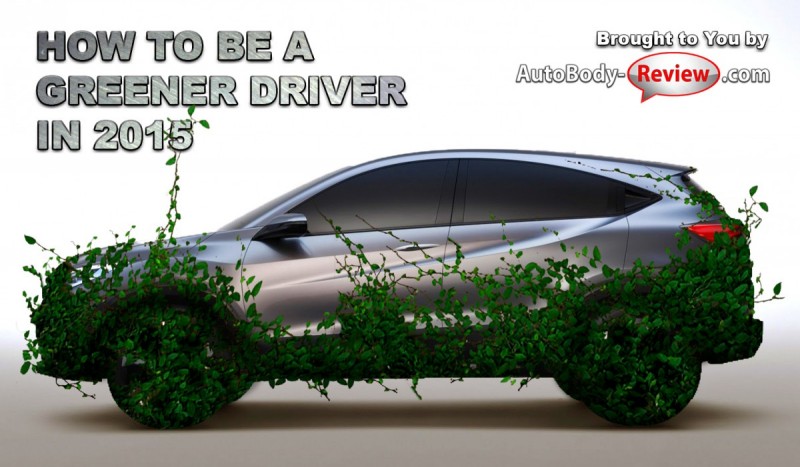You were so happy when you finally bought that truck or SUV. It was the perfect vehicle that accommodated both your family and your lifestyle needs…but then you realized it’s a gas guzzler. It’s eating up too much fuel, and now you're wondering if you should replace it with a smaller, more fuel-friendly car. Well, don’t panic just yet. Obviously, you can’t easily change cars now, but luckily you can become a greener driver!
If you were to follow these simple rules, provided by Autobody-Review.com, you can become a more environmentally responsible car owner in no time. By slowing down and using common sense, you’ll use considerably less fuel, and hopefully contribute to saving the planet.

Green Driving Techniques: Slow Down, Please!
Stop Aggressive Driving. Why is everyone in such a rush? Flooring the gas pedal not only wastes gas, but it also leads to drastically higher pollution rates. One second of high-powered driving can produce nearly the same volume of carbon monoxide emissions as 30 minutes of normal driving.
Think Ahead Down the Road. Try to anticipate stops and let your vehicle coast down as much as possible as you approach a stop. People foolishly waste gas and create unneeded wear and tear on their brakes due to hard acceleration and braking.
Follow the Speed Limit! Driving 75 mph instead of 65 mph will lower your fuel economy by about 10 percent and can dramatically increase tailpipe pollution in many vehicles.
Plan Ahead. Whenever possible, plan your trips to avoid rush hour. Stop-and-go driving burns gas and increases emissions of smog-forming pollutants.
Combine Trips. Warmed-up engines and catalysts generate much less air pollution, so combining several short trips into one can make a big difference.
Take a Load Off. Carrying around an extra 100 pounds reduces fuel economy by about one percent. Take a few moments to unload your cargo area.
Don’t Overuse Your A/C. Try using the vents and opening windows to cool off before you turn on the air conditioner. The air conditioner use increases fuel consumption, increases emissions in some vehicles, and involves environmentally damaging fluids.

Maintenance Tips: Make the Green Scene
Keep Your Tires Properly Inflated. Tires should be inflated to the pressure recommended for your vehicle. This information is often printed inside the door frame or in your owner's manual. For every three pounds below recommended pressure, fuel economy goes down by about one percent. Tires can lose about one pound of pressure in a month (just ask Bill Belichick), so check the air pressure regularly and always before going on a long trip or carrying heavy loads. Underinflated tires can also detract from handling, safety, and how long the tires will last.
Stay On Top of Your Fuel Economy. If you notice it slipping, that could mean you have a minor problem with the engine or your brakes. By getting an advance warning, you can fix problems before you have a breakdown on the road.
Stay in Tune. Whether you do it yourself or go to a mechanic, a tune-up can increase your fuel economy substantially. Follow owner's manual guidelines and always be certain to check for worn spark plugs, dragging brakes and low transmission fluid. In addition, have your wheels aligned and tires rotated; and replace the air filter if needed. Also make sure all used vehicle fluids are recycled or disposed of safely.
Change the Oil. In addition to making your car or truck last longer, replacing the oil and oil filter regularly will also help fuel economy. Check your owner's manual for specific recommendations about how often to change.

At AutoBody-Review.com, we pride ourselves on bringing you news that you can use in your daily lives—by offering helpful driving and car maintenance safety tips, automotive technology updates and insights into the collision industry that are fresh and easy-to-read.

Ed Attanasio
Editor, AutoBody-Review.com
Ed has been a professional writer for more than 35 years and his specialties include B2B reporting, blogging, ad copywriting, public relations and general editorial.


